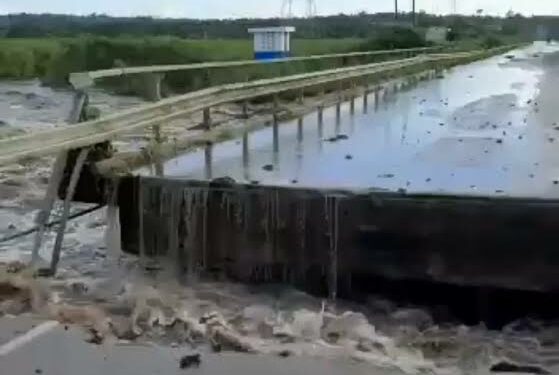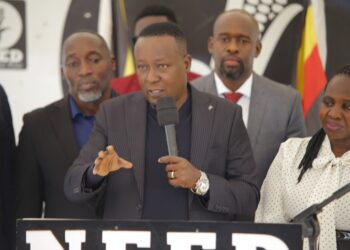A section of Kampala-Masaka Highway was grounded by the flooding River Katonga on Thursday May 11th, jeopardizing the flourishing trade in the Great Lakes region.
The part of the Highway that was cut-off is an embodiment of the Northern Corridor trade route to Rwanda and the Democratic Republic of Congo (DRC).
The cut-off has since disrupted the flow of traffic and caused a gridlock, stretching 20 kms, according to eyewitnesses.
Unganda National Roads Authority (UNRA), a government agency charged with replenishing and overseeing the state of Uganda’s roads urged motorists and traders to use an alternative route, via Mpigi to Sembabule, to be able to reach Masaka.
“Due to the severe flooding at Katonga and following advice from Uganda police, we urge motorists from Kampala to Masaka to divert and use the Mpigi-Kanoni-Maddu-Ssembabule-Masaka-Kampala route as we allow water levels to subside,” UNRA wrote in a tweet.
However, the alternative route is longer, almost twice the distance of the previous one and motorists have to incur more in fuel expenses, which will automatically lead to hiking of transport fares.
Achilles Byaruhanga, the executive director of Nature Uganda supplied a neat link between the flooding and continued obliteration of the river ecosystem, through intense human activity like sand mining and rice growing.
“People have been encroaching on the swamps around the river. Much of the wetland has been destroyed by people who have been mining sand. Others have been clearing it for cropland,” Byaruhanga asserted.
It is the first time the bridge at Katonga has been cut off in more than 50 years, a view echoed by Mr. Byaruhanga.
It should be noted that relentless encroachment on water catchment areas can have apocalyptic consequences for people living nearby, as these areas like swamps act as water reservoirs that mitigate floods when it rains heavily.
Hence the flooding of river Katonga can be clearly explained. Designated as a wetland of international importance under the Ramsar Convention, the Katonga swamp which is a catchment area for River Katonga and Lake Victoria has endured relentless encroachment from sand miners and rice growers.
Environmental conservationists drew a red line over the creation of rice fields in the area a couple of years ago, saying this would hurt the area’s ecosystem.
Government has severally passed directives, banning rice growing and other activities in swamps to protect the ecosystem of wetlands and avoid disasters, the likes of what happened in the Katonga area.
However, such directives have remained on paper, in theoretical terms because rice growing and sand mining have persisted, an indicator of collusion and weak enforcement of government policies.
State Minister for Agriculture, Animal Industry & Fisheries (MAAIF) Hon. Fred Bwino on October 22nd last year said goverment had started an all out war against those who destroy wetlands in form of rice growing and other activities.
He said government took a bold decision to stop any kind of rice growing in swamps and other activities, on top of seriously dealing with transgressors, to curtail encroachment on these water catchment areas, something that perpetuates disaster.
This was echoed by President Yoweri Museveni in his recent post on Twitter, in which he emphasised the need to observe environmental requirements to avoid weather disasters.
“There should be no buildings or gardens 50 metres from the riverbanks, 200 metres from lakeshores, and no buildings on hills with a gradient greater than 30 degrees,” Twitted President Museveni.
Environmental experts have on several counts predicted climatic disasters to befall the great lakes region in the coming years, due to such encroachments. The region is expected to witness moments of heavy rain downpour till the month of June.
Do you have a story in your community or an opinion to share with us: Email us at editorial@watchdoguganda.com













